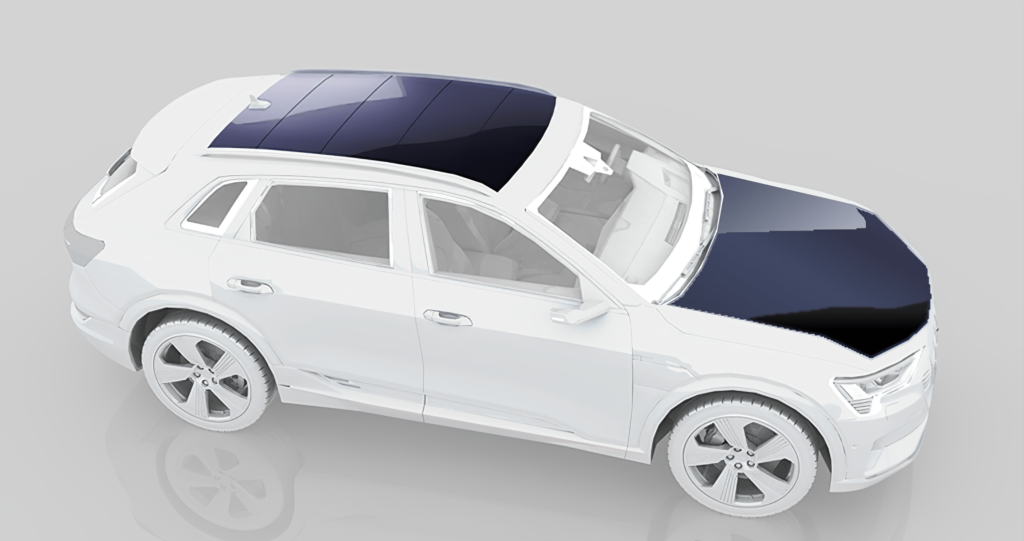Efficiency record for EV solar cell

Toshiba has developed a transparent solar cell that can be used to boost the charging of EVs (writes Nick Flaherty).
The cell uses copper oxide and has an efficiency of 8.4%, the world’s highest level for such as cell. It would sit on top of a flexible silicon solar cell on the roof or trunk of an EV to provide power. This tandem cell structure provides an overall power conversion efficiency of 27.4%, which is better than most silicon cells, as the copper oxide absorbs other wavelengths to produce energy.
Using tests set by Japan’s New Energy and Industry Technology Development Organization, Toshiba estimates that the Cu20-Si tandem cell will power an EV for 35 km before having to be recharged.
Toshiba developed the first transparent Cu2o solar cell in 2019 and has been working on improving the precise control of the CuO and Cu impurities during the fabrication of the cell’s Cu2O layer. These impurities are generated in the current reactive sputtering deposition method, and are the major cause of diminished power conversion efficiency (PCE) and transparency.
“X-ray diffraction analysis allows us to detect and quantify the degree of the CuO and Cu, giving us data that helps us identify the best deposition method to control the impurities to the lowest level,” said Kazushige Yamamoto, Fellow at Toshiba’s Corporate Research & Development Centre. “Our targets are 10% PCE for the top Cu2O cell, and 80% of transmittance. This breakthrough brings us a step closer to those targets.”
Toshiba is also working on large-scale Cu2O solar cells that are the same size as mass-produced silicon solar cells, with samples planned for external evaluation by 2023, and a roadmap to completing manufacturing technologies for commercial products in 2025.
ONLINE PARTNERS






















